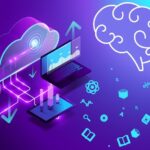The Drive to Disrupt and Transform
In today’s rapidly evolving world, innovation has become a driving force that shapes industries, economies, and societies. At the heart of this innovation lies the concept of disruption — the force that challenges the status quo, introduces groundbreaking ideas, and reshapes entire industries. The drive to disrupt and transform is rooted in a combination of necessity, ambition, and the constant human quest for improvement. In this essay, we will explore what drives disruption, the role of technology, and how it leads to transformation in various sectors.
The Nature of Disruption
Disruption refers to a radical shift that alters established patterns in markets, industries, and organizations. It often emerges from outside conventional systems, bringing new products, services, or business models that challenge and eventually replace the existing ones. Historically, disruption has been seen in various forms, from technological breakthroughs like the invention of the printing press to modern innovations such as ride-sharing apps and streaming platforms.
Disruptors often identify inefficiencies, gaps, or untapped potential in the current system. By offering a solution that is faster, cheaper, more accessible, or more sustainable, they create a shift that makes traditional methods or businesses obsolete. For instance, the advent of smartphones disrupted multiple industries, from telecommunications to photography, gaming, and social networking.
The Role of Technology in Disruption
Technology has played a crucial role in driving disruption over the past few decades. Advancements in computing power, connectivity, and data analytics have opened up new avenues for innovation. The rise of the internet and the development of artificial intelligence, blockchain, and machine learning have transformed industries by automating processes, enhancing decision-making, and improving efficiency.
For example, the banking sector has witnessed a significant transformation through FinTech companies that leverage digital platforms, offering services such as peer-to-peer lending, mobile payments, and cryptocurrencies. These innovations have disrupted traditional banking models and made financial services more accessible to a global audience.
The tech industry itself is also a prime example of disruption. Companies like Apple, Amazon, and Google have not only created new products but also revolutionized entire business models. Apple’s iPhone redefined communication, while Amazon’s online marketplace transformed retail. Similarly, Google’s search engine changed how people access information, while its advertising model disrupted traditional media and marketing channels.
The Drive Behind Disruption: Necessity and Ambition
The drive to disrupt is not purely about challenging existing systems; it is often fueled by a combination of necessity and ambition. Necessity arises when current systems are no longer adequate to meet the needs of consumers or businesses. Industries that rely on outdated technologies or business models often experience stagnation and inefficiency, which can prompt the need for change.
Ambition, on the other hand, is the driving force behind entrepreneurs, innovators, and organizations who seek to create something new and better. Visionary leaders are often motivated by the desire to improve lives, make processes more efficient, or create new opportunities. For instance, Elon Musk’s vision for transforming transportation through electric vehicles and space exploration led to the founding of Tesla and SpaceX, both of which have challenged traditional industries and reshaped their respective fields.
The desire to solve problems and create something that has never been done before pushes individuals and organizations to think outside the box. These disruptors are often willing to take risks, invest heavily in research and development, and challenge the norms that govern their industries. The willingness to take risks and push boundaries has been a hallmark of transformative leaders such as Steve Jobs, Jeff Bezos, and Mark Zuckerberg.
Transformation Across Different Sectors
The drive to disrupt and transform is not limited to any single industry; its impact is felt across a wide range of sectors. Below, we explore how disruption has transformed key areas such as business, healthcare, education, and transportation.
Business and Entrepreneurship
In the business world, disruption is often the result of new business models that challenge traditional approaches to commerce. The rise of the gig economy, for example, has transformed the way people work. Platforms like Uber, Airbnb, and TaskRabbit have created flexible, decentralized ways for people to earn income by offering services on demand. These companies leverage technology to connect individuals and customers, disrupting traditional industries such as transportation, hospitality, and manual labor.
Moreover, the shift from physical stores to e-commerce has been a significant transformation in the retail industry. Traditional brick-and-mortar stores, once the cornerstone of shopping, are being replaced by online platforms that offer convenience, variety, and competitive pricing. Companies like Amazon, Alibaba, and Shopify have revolutionized the way products are bought and sold, enabling even small businesses to reach global markets.
Healthcare
The healthcare sector has also experienced transformative changes driven by innovation and disruption. Advances in medical technology, telemedicine, and data analytics have improved patient care and made healthcare services more accessible. For example, telehealth services allow patients to consult with doctors remotely, which is particularly beneficial in underserved or rural areas where access to healthcare professionals may be limited.
Furthermore, wearable devices like fitness trackers and smartwatches enable individuals to monitor their health in real-time, providing valuable data that can help prevent diseases and improve overall well-being. Disruptive innovations in healthcare not only improve outcomes but also make care more personalized, efficient, and cost-effective.
Education
The education sector has also been profoundly impacted by the drive to disrupt and transform. Traditional models of education, based on physical classrooms and fixed schedules, are being replaced by online learning platforms that offer flexibility and accessibility. Companies like Coursera, Udemy, and Khan Academy have revolutionized education by providing online courses that cover a wide range of subjects, from business to technology and the arts.
Moreover, advancements in artificial intelligence and machine learning are enabling personalized learning experiences. AI-powered tools can assess a student’s strengths and weaknesses, tailoring lessons to their individual needs. This shift towards personalized, on-demand learning is making education more accessible and effective for a global population.
Transportation
Transportation is another area where disruption has been particularly noticeable. The rise of electric vehicles (EVs) has disrupted the automotive industry, challenging traditional gasoline-powered cars and promoting sustainability. Tesla has been a leader in this transformation, pushing the entire industry towards cleaner, more energy-efficient alternatives.
Additionally, ride-sharing services like Uber and Lyft have transformed urban transportation by offering more convenient, affordable, and sustainable alternatives to traditional taxis. These services leverage technology to connect drivers and passengers, creating a more efficient and flexible transportation network.
The Future of Disruption and Transformation
As technology continues to advance, the drive to disrupt and transform will only intensify. Industries that have yet to experience disruption, such as agriculture, manufacturing, and energy, are likely to undergo significant transformations in the coming decades. The rise of automation, renewable energy technologies, and sustainable practices will change the way we live and work, creating new opportunities and challenges.
In the future, disruption will be increasingly focused on solving global challenges such as climate change, resource scarcity, and social inequality. Innovations that address these issues will not only transform industries but also help create a more sustainable and equitable world.
Conclusion
The drive to disrupt and transform is an intrinsic part of human progress. It is fueled by a desire to challenge existing systems, solve problems, and improve the way we live. Technology has been a powerful enabler of disruption, creating opportunities for innovation across various industries. From business to healthcare, education, and transportation, the impact of disruption is vast and far-reaching. As we move forward, we can expect continued transformation driven by the quest for improvement, sustainability, and the desire to create a better future for all. The drive to disrupt and transform is not just about change; it is about creating a wo











